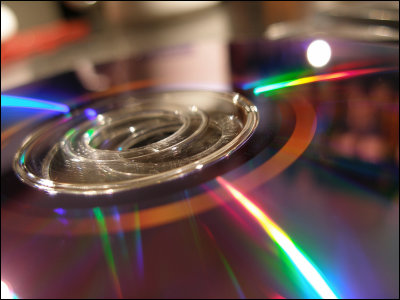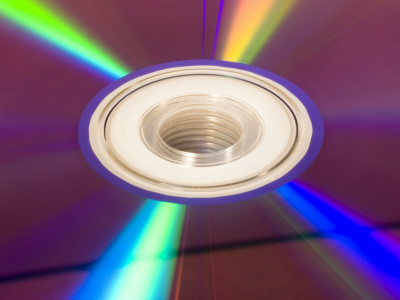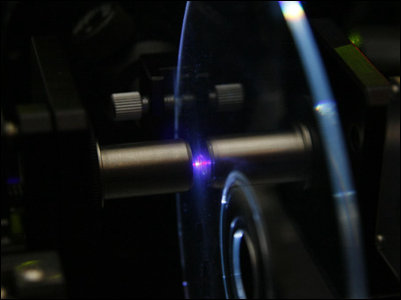The Canadian Preservation Institute explains the factors that degrade CDs, DVDs, and BDs and the lifespan of each type

Important data and video/audio that you want to keep as memories are often stored on cloud services or HDDs, as well as optical disc recording media such as CDs, DVDs, and Blu-ray discs (BD). I have. While such optical discs are compact and easy to manage and distribute, VHS, which was once mainly used as a recording medium,
Longevity of Recordable CDs, DVDs and Blu-rays — Canadian Conservation Institute (CCI) Notes 19/1 - Canada.ca
https://www.canada.ca/en/conservation-institute/services/conservation-preservation-publications/canadian-conservation-institute-notes/longevity-recordable-cds-dvds.html
The average life span for each optical disk indicated by CCI is as follows. According to CCI, CDs with phthalocyanine dyes and a gold metal layer are better to use when maximum longevity is required, but CDs have less storage capacity than DVDs and BDs, and the gold metal layer is Due to the high cost, there are many cases where this type of optical disc cannot be used even for storing important data. In addition, the life expectancy shown in the table below is based only on the effects of general temperature and relative humidity, and the storage environment will further reduce the life span.
| Formatting an optical disc | Average life |
|---|---|
| CD-R (phthalocyanine dye, gold metal layer) | over 100 years |
| CD-R (phthalocyanine dye, silver alloy metal layer) | 50 to 100 years |
| DVD-R (gold metal layer) | 50 to 100 years |
| CDs | 50 to 100 years |
| CD-RW | 20 to 50 years |
| BD-RE | 20 to 50 years |
| DVD+R (silver alloy metal layer) | 20 to 50 years |
| CD-R (cyanine or azo dye, silver alloy metal layer) | 20 to 50 years |
| DVD+RW | 20 to 50 years |
| BD-R (uncolored, gold-plated) | 10 to 20 years |
| DVD-R (silver alloy metal layer) | 10 to 20 years |
| DVDs and BDs | 10 to 20 years |
| BD-R (dye or no dye, single layer or double layer) | 5 to 10 years |
| DVD-RW | 5 to 10 years |
| DVD+R DL (dual layer) | 5 to 10 years |
A CD is made up of multiple layers, as also shown in the diagram below. Appearance-processed items, such as artist music CDs, have a label layer on top, followed by a protective layer, a metallic reflective layer, a dye layer, and a base layer. Polycarbonate is used for the base layer of the CD, but the metal, dye, and top protective layer are composed of various materials, so there is a difference in stability depending on what is used.

First, regarding the dyes, light green phthalocyanine dyes are more stable to light, heat, and relative humidity than the blue
| dyes and dye colors | reflective layer | Appearance from the non-label side of the disc in reflected light | Appearance from the unlabeled side of the disc with light transmitted through the disc |
|---|---|---|---|
| Cyanine (blue) | Money | green | blue |
| Phthalocyanine (light green) | Money | Money | Light green |
| Cyanine (blue) | silver alloy | blue or greenish blue | blue or light blue |
| Phthalocyanine (light green) | silver alloy | Light green | Light green |
| Azo (dark blue) | silver alloy | dark blue or light blue | dark blue or light blue |
The 'metallic reflective layer', which reflects the laser light for reading the disc and returns the laser light to the signal detector of the media playback player, is also greatly related to the stability of the CD. The use of gold in the reflective layer is very stable and eliminates the risk of 'laser rot', which is corrosion of the metal layer. Silver and silver alloys, on the other hand, are more prone to corrosion, making CDs more likely to become unreadable, especially when exposed to contaminants.
DVDs are often used as a medium for storing information because they can store much more capacity than CDs. A DVD consists of two stacked discs half the thickness of a CD that are manufactured separately and then glued together. Like CDs, DVDs consist of a label surface, a plastic base, a protective layer, a metallic reflective layer, and a dye layer. The dye used in DVD is azo or cyanine, but it seems that the appearance is a little difficult to understand because less dye is used than CD. Also, the metal reflective layer is similar to that of CDs and is composed of gold, silver, or a silver alloy.

What is important in the composition of DVD is the 'adhesive' by the process of composing in the form of overlapping two discs. A CCI study identified a potential problem in cases where the chemical reaction of the adhesive corroded the metal layer under conditions of high temperature and humidity.
Offering 7 times the capacity compared to DVD, BD offers greater capacity by separating the information layers up to 4. A feature of BD is that a hard coat layer is used as the base layer, and this layer strongly protects the information transmission layer and metal reflective layer on the bottom of the disc, which is the reading surface of the disc. There are two types of BD, one that uses a dye that looks yellowish, and the other that looks dark gray to brownish and is made of non-pigmented silicon and copper alloys. have been shown to be considerably less stable than CDs and DVDs.

CCI shows how to reduce the damage rate of optical discs such as CDs, DVDs, and BDs, along with the results of the stability study. First, one of the main reasons for premature data corruption on optical discs is the use of improper recording techniques. The recording speed is standardized for each optical disc, and it is recommended to record at about 4x to 12x speed for CDs, 4x to 8x speeds for DVDs, and about 4x speeds for BDs. Appropriate maintenance is also important, such as removing dust from the recorder when recording, and checking in detail whether the optical disk is compatible with the recorder.
The storage and handling of optical discs is also an important factor that determines their lifespan. The CCI recommends that the best way to store CDs and DVDs is to store them vertically in a standard-sized jewel case or one-piece polypropylene case, removing any booklets or leaflets that come with your CD or DVD purchase. is. CCI warns that storing a disc in a paper or plastic sleeve provides a much weaker physical protection and can also interact chemically with the disc. As for the handling method, it is necessary to hold the center hole and the outer edge between the index finger and thumb, as fingerprints will interfere with reading. If you want to write, it is strictly prohibited to use adhesive labels. In addition, CCI also shows cleaning methods such as `` Never wipe in a circular motion when wiping the disk '' and `` Wipe with a soft cloth so as not to scratch it ''.
Finally, CCI recommends making copies as an important part of preserving and archiving information on optical discs. Ideally, it is important to create three copies on at least two types of recording media, one of which is kept separate from the storage location. Also, by branding the media differently, you can avoid the risk that all your data will be lost for the same reason, CCI said.
Related Posts:
in Hardware, Posted by log1e_dh







